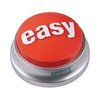Do the PTX work as advertised and..................
The RCBS Lock Out die, once set up it is relatively trouble free or a PITA?? Does it function smoothly or something that needs lots of attention, especially when changing powder charge and/or calibers??
The RCBS Lock Out die, once set up it is relatively trouble free or a PITA?? Does it function smoothly or something that needs lots of attention, especially when changing powder charge and/or calibers??




